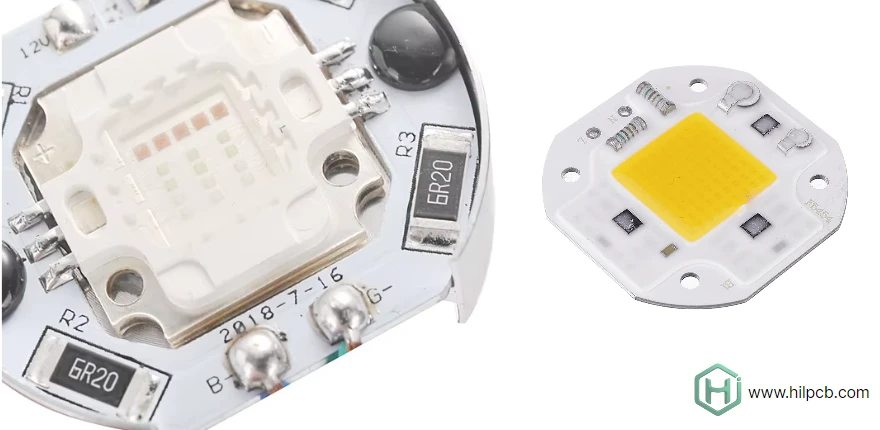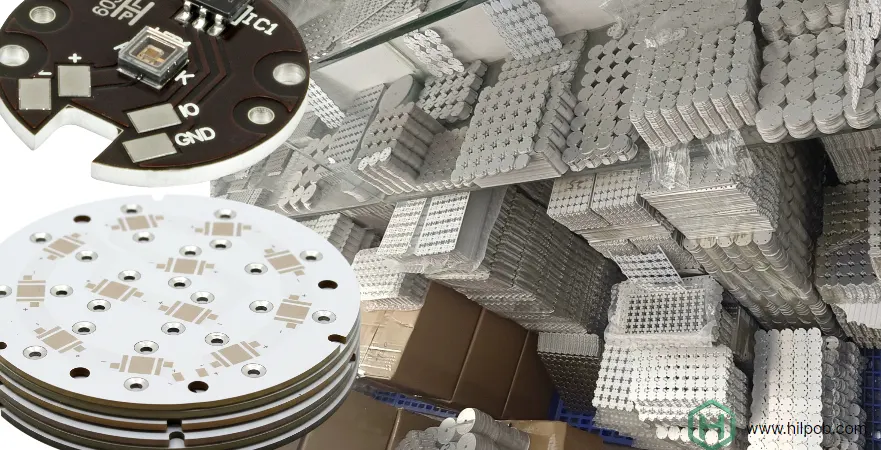Aluminum PCBs (Aluminum Printed Circuit Boards) are highly sought after for their exceptional thermal conductivity, durability, and cost-effectiveness. They are commonly used in applications where efficient heat dissipation is critical, such as LED lighting, power electronics, and automotive components.
This article explores the key steps involved in Aluminum PCB Fabrication, material selection, challenges during processing, and essential quality control standards to ensure top performance.
Aluminum PCB Fabrication Process: Major Steps and Technical Requirements
Aluminum PCB fabrication involves a series of precise manufacturing steps that demand specialized equipment and high technical accuracy.
Design and Layout
The process begins with circuit design. The layout must consider thermal paths, component placement, and electrical routing to optimize performance and heat dissipation.Material Selection
The right aluminum alloy and dielectric layer are chosen based on thermal and mechanical requirements. Material selection directly influences performance and reliability.Etching and Drilling
The copper layer is etched to form electrical traces, and holes are drilled for vias and through-hole components. Precision in this step ensures electrical accuracy.Solder Mask and Silkscreen Application
A solder mask is applied to protect the copper circuitry and prevent oxidation. Silkscreen printing provides visual component labels and orientation guides.Testing and Inspection
Each fabricated PCB undergoes Automated Optical Inspection (AOI), continuity testing, and impedance verification to detect manufacturing defects.Assembly and Finishing
Components are mounted through SMT assembly or through-hole assembly, followed by reflow or wave soldering. The final step includes cleaning and protective coating.
Material Selection and Treatment in Aluminum PCB Fabrication
Material choice significantly impacts the thermal and electrical behavior of an aluminum PCB. Key material considerations include:
- Aluminum Substrate
Common alloys such as 5052 and 6061 are used for their strength, corrosion resistance, and heat conduction properties. - Copper Foil Layer
The copper thickness typically ranges from 1oz to 3oz depending on the current-carrying requirement. Thicker copper improves heat spreading and power handling. - Dielectric Layer
This insulating layer determines the thermal resistance between the copper and the aluminum base. Materials like epoxy resin or ceramic-filled polymers are often used. - Thermal Interface Materials (TIMs)
TIMs enhance heat transfer between the PCB and the external heat sink, reducing thermal buildup during operation.

How to Enhance Aluminum PCB Performance Through Fabrication
Improving performance during the fabrication process can significantly extend PCB life and efficiency.
Optimizing Copper Thickness
Using thicker copper layers reduces resistance and improves current handling, ideal for power supply and automotive electronics.Advanced Heat Management
Combining metal-core PCBs with proper design layouts improves thermal dissipation and reliability.Precision Drilling and Etching
Utilizing laser drilling and high-resolution etching reduces defects and ensures cleaner circuit paths.High-Quality Soldering Techniques
Adopting controlled atmosphere reflow soldering or selective soldering enhances joint integrity and prevents oxidation.
Common Challenges and Solutions in Aluminum PCB Fabrication
| Challenge | Description | Solution |
|---|---|---|
| Thermal Expansion Mismatch | Different expansion rates between aluminum and copper may cause stress and cracking. | Use flexible dielectric materials and controlled reflow temperatures. |
| Soldering Difficulties | High aluminum heat conductivity can interfere with soldering. | Employ preheating and temperature profiling during reflow. |
| Component Placement Accuracy | Misalignment affects functionality and yield. | Utilize automated pick-and-place systems for precision. |
| Delamination | Poor bonding between layers can occur. | Use high-quality adhesives and surface preparation processes. |
Quality Control and Standards in Aluminum PCB Fabrication
Strict quality assurance is essential to maintain reliability and performance.
IPC Standards Compliance
Following IPC-A-600 and IPC-6012 standards ensures consistency in electrical and mechanical performance.Automated Optical Inspection (AOI)
AOI systems detect solder bridges, missing components, or trace defects before final assembly.Functional and Thermal Testing
These tests validate electrical performance and simulate operational thermal stress to ensure durability.Thermal Cycling Tests
PCBs are subjected to repeated heating and cooling cycles to assess mechanical integrity.ISO Certification
ISO 9001-certified manufacturers demonstrate consistent quality management and production reliability.
Conclusion
Aluminum PCB fabrication is a vital process in ensuring high-performance, reliable PCBs for applications requiring optimal thermal management. At HILPCB, we specialize in producing and assembling all types of PCBs, including aluminum, FR4, flex, and more.
Why Choose HILPCB?
- Comprehensive Expertise: From aluminum PCBs to high-speed and rigid-flex PCBs, we offer a full range of PCB solutions.
- Precision Engineering: We use advanced techniques and high-quality materials to ensure every PCB meets industry standards.
- End-to-End Solutions: From fabrication to assembly, we handle it all, delivering reliable and durable PCBs for demanding applications like LED lighting, automotive electronics, and power supplies.
Let Us Support Your Project
No matter the complexity, HILPCB is your trusted partner for high-quality, custom PCB solutions. Ready to bring your project to life? Contact us today to discuss your needs and get started.

